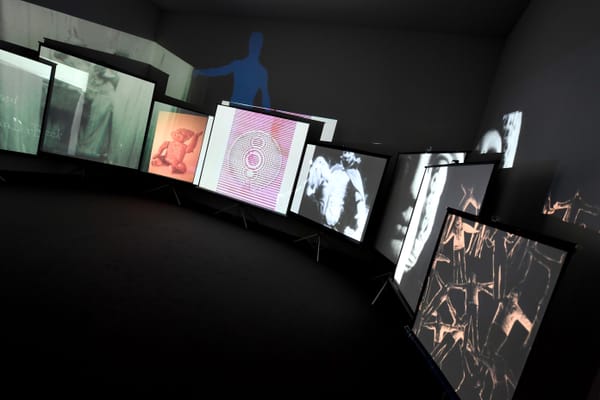In his 1966 manifesto “CULTURE: Intercom and Expanded Media,” the late experimental filmmaker and artist Stan VanderBeek urged artists to exploit “the maximum use of the information devices we now have at our disposal.” At the time, this was a provocation. Now, no person alive, let alone any artist, has any choice but to use such devices. VanderBeek’s art looks different as a result of this shift. One of his most famous works, “Panels for the End of the World: Phase 2”, is a massive mural flooded with hundreds of Xerox collages that is often displayed in two forms: the original piece, as well as the piece assembled collage by collage and faxed to the Museum of Contemporary Art in Chicago for an exhibition called “Art by Phone.” You’ll find JFK, Htler, Paul McCartney, several professional athletes, and various other historical figures among the wreckage. All the images are shown without context, creating an ocean of fragmented meanings and associations. In 2024, the experience is reminiscent of scrolling Instagram.
This doesn’t make VanderBeek’s current retrospective at Magenta Plains any less inspiring. Indeed, seeing this work in person is still monumental. It is art-making as a channeling of the culture in its totality. It tries to capture the vibe of the now (or, the then), like wild energy concentrated in a crystal ball.
